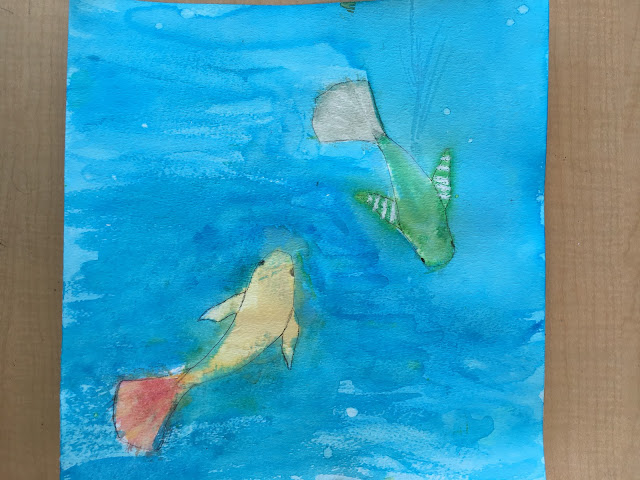A lesson that has become
really popular with the 8th grade classes at Williams is the annual
animal/character sculpture project. This was a lesson created by my
supervising practitioner Ed O’Gilvie and later taught by myself during the
practicum. The purpose of said lesson is
to teach students how to build out and create organic forms (animals, cartoon
characters, etc.) by using geometric forms (sphere, cone, etc.) as a foundation. A secondary objective is to encourage
students to begin thinking about how everyday materials (cardboard, newspaper)
can be recycled and utilized to create art, like sculptures.
Interestingly this particular project did not
start with a brainstorming drawing. Instead, students began by preparing
their sculpting materials (cutting out many 1” wide thin cardboard strips from
cereal boxes, Ritz cracker boxes, frozen food boxes, etc.). Students then used their fingers or the edge
of the worktables to curve these cardboard strips. In order to create the
initial structure students had to take three of these strips and tape them
together (using masking tape), end-to-end, thereby creating a ring.
Holding the ring horizontally students then built off of this to create a second
ring that runs vertically around the other.
Students continued to add cardboard rings and masking tape to their sculpture until there were no more gaps in the newly created form (a sphere, ellipsoid or ovoid).
Additional forms like
crumpled balls of newspaper and paper towel tubes were added to the sculptures
in order to create appendages like heads, arms, fingers, tails and objects like
goggles, shells etc.
When they were ready
to move onto the next step students would then apply two layers of paper mache
newspaper to their sculpture, let the surface dry and finally apply one layer
of paper mache paper towel (this final layer is intended to cover up the text
and images of the newspaper underneath as well as create a better painting
surface).
Lastly students used acrylic paint and decorative
elements like beads to give life and color to their sculpture.







































































